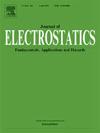不同几何模型下介电液体的电对流和电热对流研究进展
IF 2.1
4区 工程技术
Q3 ENGINEERING, ELECTRICAL & ELECTRONIC
引用次数: 0
摘要
电流体力学(EHD)研究电场与各种流体介质之间的相互作用。电驱动流体运动的核心原理在于将电能直接转化为流体动能,形成高效、智能利用能量的基础。在EHD的基础课题中,库仑力驱动的电对流(EC)对于理解流场与电场之间的相互作用机制以及电荷输运过程起着至关重要的作用。在EC的基础上,电热对流(ETC)通过结合温度场、电场、流场和电荷密度场之间的非线性相互作用,引入了额外的复杂性。这导致了丰富的非线性分岔现象,并为传热增强和智能热管理等应用提供了新的理论见解。本研究系统地检查了EC和ETC在方腔、平行板和环形几何中的行为和潜在机制。重点研究了电荷产生机理、控制方程的无因次化和关键控制参数,同时分析了EC和ETC中的非线性相互作用及其对流动稳定性和传热效率的影响。本文章由计算机程序翻译,如有差异,请以英文原文为准。
Review on electro-convection and electro–thermo-convection in dielectric liquids within different geometrical models
Electrohydrodynamics (EHD) explores the interactions between electric fields and various fluid media. The core principle of electrically driven fluid motion lies in the direct conversion of electrical energy into fluid kinetic energy, forming the basis for efficient and intelligent energy utilization. Among the fundamental topics in EHD, Coulomb-force-driven electro-convection (EC) plays a crucial role in understanding the interaction mechanisms between flow fields and electric fields, as well as charge transport processes. Building upon EC, electro–thermo-convection (ETC) introduces additional complexity by incorporating nonlinear interactions among the temperature field, electric field, flow field, and charge density field. This leads to rich nonlinear bifurcation phenomena and provides new theoretical insights for applications such as heat transfer enhancement and intelligent thermal management. This study systematically examines the behavior and underlying mechanisms of EC and ETC in square cavities, parallel plates, and annular geometries. It focuses on charge generation mechanisms, the dimensionless formulation of governing equations, and key control parameters, while also analyzing the nonlinear interactions in EC and ETC and their impact on flow stability and heat transfer efficiency.
求助全文
通过发布文献求助,成功后即可免费获取论文全文。
去求助
来源期刊

Journal of Electrostatics
工程技术-工程:电子与电气
CiteScore
4.00
自引率
11.10%
发文量
81
审稿时长
49 days
期刊介绍:
The Journal of Electrostatics is the leading forum for publishing research findings that advance knowledge in the field of electrostatics. We invite submissions in the following areas:
Electrostatic charge separation processes.
Electrostatic manipulation of particles, droplets, and biological cells.
Electrostatically driven or controlled fluid flow.
Electrostatics in the gas phase.
 求助内容:
求助内容: 应助结果提醒方式:
应助结果提醒方式:


